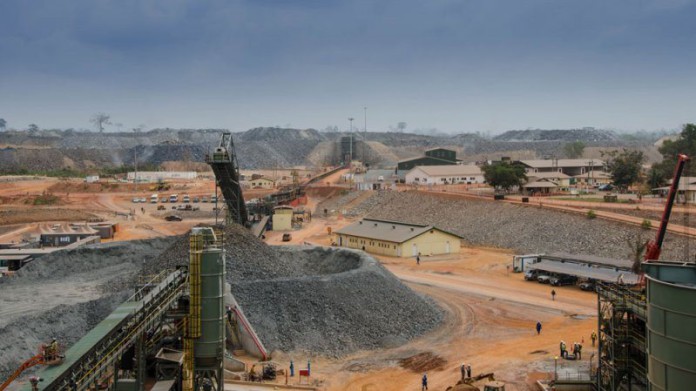
GOLD Fields is to buy a 50% stake in Asanko Gold Mines (AGM), a subsidiary of Toronto-listed Asanko which produces about 200,000 ounces of gold a year from its mine in Ghana, but which has struggled to refinance itself lately following negative investor reports.
The basics of the transaction is that Gold Fields will pay $165m for a 50% share of Asanko’s 90% stake in AGM. The balance of the mine is held on a free-carry basis by the Ghana government. A $20m deferred payment will also be made once Esaase, a development project held by AGM, meets a production milestone, probably by 2019. Gold production is from Nkran and satellite deposits Akwasiso and Dynamite Hill.
The consideration is enough to retire Asanko’s $164m debt which at LIBOR +6% is expensive. In June last year, a hedge fund Muddy Waters, produced a negative report on AGM that it would have to spend $115m or go bust – a view that Asanko president and CEO, Peter Breese, rejected out of hand.
Nevertheless, the firm’s share price took a one-third knock whilst Breese complained the negative sentiment made it hard to finance the company. In January, the firm said it was “progressing” in respect of refinancing talks with Red Kite, an anchor investment of Asanko’s which provided the firm some $150m in 2013 for the $286m Asaase gold mine.
Gold Fields will assist in the recapitalisation of Asanko be means of subscribing for shares through a rights issue that will see Gold Fields take a 9.9% of Asanko for $17.6m. All in all, Gold Fields is spending $202.6m for roughly 100,000 oz of gold annually on current production metrics. It said the transaction exceeded its return hurdles of 15% at a gold price of $1,300/oz and a payback of five years.
AGM has a 15-year life of mine but Breese, has long spoken of expansion. In June, Asanko completed a bankable feasibility study regarding the expansion of AGM in which it would increase production to some 230,000 ounces of gold a year by means of a $22m mill expansion. It would then extend gold output to 460,000 oz/year, possibly from 2022, spending a total of $200m.
Production for the 2017 came in at 205,047 oz which was just about within the revised guidance range for the year of between 205,000 to 225,000 oz of gold. Asanko will remain the operator of the asset, although Gold Fields CEO, Nick Holland, said today in a conference call that the group would establish a joint steering committee which would have oversight of budgets and planning. “We are comfortable with them,” he said.
“The transaction is demonstrably accretive to Gold Fields,” the company said in a statement to the Johannesburg Stock Exchange. “We are comfortable that despite our current investment programme (Damang and Gruyere) this acquisition is well within our balance sheet capacity, particularly as it is a producing asset,” it added.
Gold Fields has aggressively pursued resource and reserve replacement and expansion over the last two years with the development of the Gruyere project in western Australia and the extension of Damang in Ghana. Total capex for the group for the current financial year was recently put at $835m of which $286m was growth capital consisting of $105m for Damang, $145m for Gruyere and $36m for South Deep. Another $83m has been budgeted for Salares Norte, a project in Chile.
Goldman Sachs said, however, the transaction might be perceived negatively. “While the strategy of growing ounces via acquisitions is positive, the cash outflow comes at a time when the company is already in the middle of a significant capex spend at South Deep and Gruyere, with South Deep having regularly disappointed against its targets,” it said.
“We believe this incremental investment at a time of higher capex is likely to be taken negatively by the market,” said Goldman Sachs. Shares in Gold Fields were about 5.5% weaker in mid-morning trade on the JSE.








